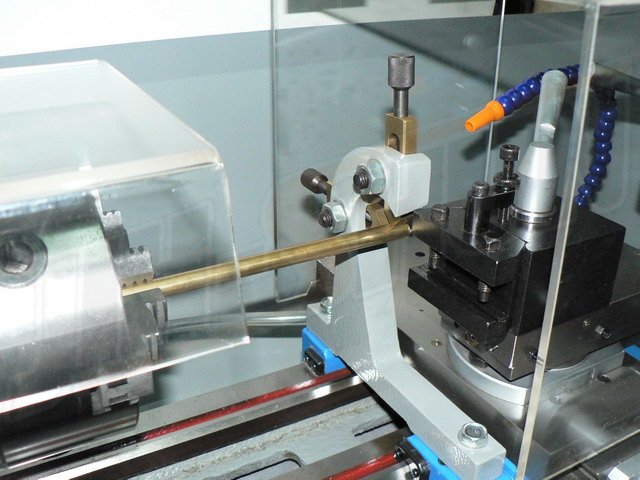
Proceed with the lathe. They ensure concentricity, but limit the length of the supporting cut. Also, to achieve the best results in turning, vibration must be kept to a minimum. Vibration is problematic for any turning, but it is particularly problematic when turning long spindles, or hollowing out deep vessels.
To reduce vibration, a steady rest provides needed support. Typically, steady rests are selected to provide support for longer cuts. Both steady rests and follower rests were developed to remedy the lathe turning deflection problem. Steady rests are mounted to the lathe bed and do not move with the machining operation Continuously watch the bearing surface and adjustable jaws as when the workpiece heats up it will expand, closing the distance between the jaws and the workpiece.
The purpose of the follower rest is to keep long or small diameter work from deflecting when a cutting tool is applied to it. It is attached to the lathe saddle and moves as the saddle moves, keeping the point of support directly behind the cutting tool. This helps you maintain accuracy on long cuts and on small diameter stock.
of the steady rest and place the workpiece in the chuck with the bearing surface over the adjustable jaws. Clamp the steady rest securely to the ways. Close the top of the follower rest is to keep long or small diameter work from deflecting when a cutting tool is applied to it. It is attached to the lathe saddle and moves as the saddle moves, keeping the point of support directly behind the cutting tool.
This helps you maintain accuracy on long cuts and on small diameter stock. supporting cut. Also, to achieve the best results in turning, vibration must be kept to a minimum. Vibration is problematic for any turning, but it is particularly problematic when turning long spindles, or hollowing out deep vessels.
To reduce vibration, a steady rest provides needed support. Typically, steady rests are used with cylindrical parts